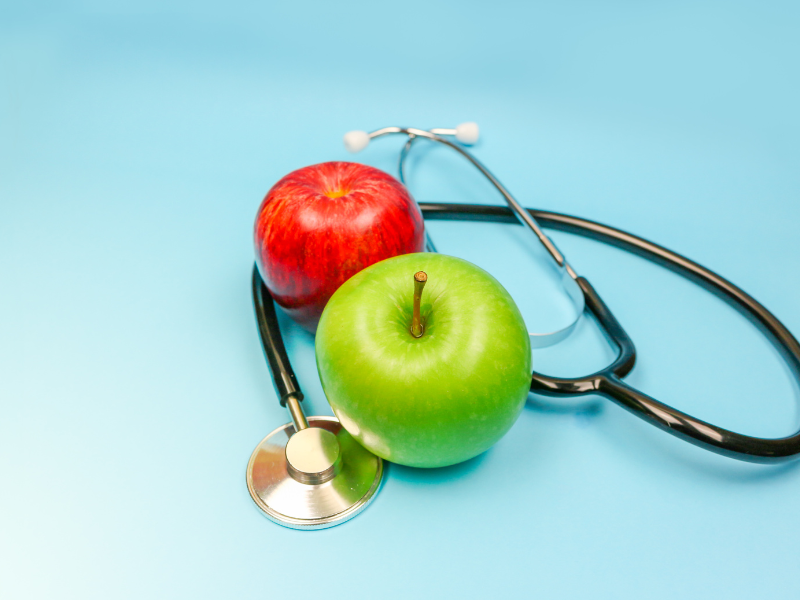Four proven ways to lower your cholesterol
Written by
Jonathan Steedman
Did you know that cardiovascular diseases contribute to about a third of the world's deaths every year? It's a staggering number, but there are some simple dietary changes we can make to reduce our risk of this leading cause of death.
Although cardiovascular disease is an umbrella term for a number of specific conditions, one of the main risk factors for a number of these diseases is elevated low density lipoprotein or “LDL” cholesterol. To that end, here are some of the most powerful ways to lower your LDL cholesterol.

01
Saturated Fat
The primary strategy to stop an increase in LDL cholesterol is reducing saturated fat intake. We can find saturated fat in fatty cuts of meat, butter, cream, and coconut products, as well as in baked goods that contain butter or shortening. Keeping saturated fat intake below 10% of our total daily energy intake or under 20 grams is ideal for most people's energy levels.
Now, you don't have to obsessively track every gram of saturated fat you consume. It's more about looking at your overall dietary patterns and making mindful food choices to reduce your saturated fat intake. For example, a tablespoon of butter contains around 6 grams of saturated fat, and a 200 gram T-bone steak contains around 12-14 grams of saturated fat. You can still enjoy these foods, but you need to be aware of the other sources of saturated fat in your diet.
02
Ok, but what do I eat instead?
For the best results, look to replace foods high in saturated fat with foods that are high in polyunsaturated fatty acids (PUFA), monounsaturated fatty acids (MUFA), or complex carbohydrates.
PUFAs & MUFAS can be found in fatty fish, nuts, seeds, tahini, avocado, olive oil, and other vegetable and seed oils. You could swap from cooking with butter to olive oil, or incorporate more nuts and seeds into your diet as snacks.
Lastly, complex carbohydrates can be found in fruits, vegetables, grains, nuts, seeds, legumes, and lentils. You could add a fruit and veggie smoothie to your day, ensure you have a serve of wholegrains at most meals, or experiment with adding beans and lentils to your salads.
It's important to note that dietary cholesterol isn't as important as saturated fat when it comes to cholesterol levels. While foods like eggs and shellfish contain cholesterol, they are still nutritious and can be enjoyed in moderation. For those with a family history of high cholesterol, it may be best to limit shellfish consumption to once a week and to keep under 7 eggs a week.
Now that you’ve made changes to prevent your LDL from increasing, let’s attack a few more things to lower your currentLDL levels. The great thing about these strategies is that they work independently through different mechanisms, meaning they stack really well, and the more of these we can do, the better the outcome.
03
Fibre
One of the most effective ways to lower your LDL is by increasing your intake of fruits, vegetables, grains, beans, and legumes. I know, it's not exactly a groundbreaking suggestion coming from a dietitian, but hear me out. The reason behind this recommendation is because of the soluble fibre found in these foods.
Soluble fibre is a type of fibre that is abundant in oats, psyllium husk, beans, as well as varying amounts in fruits, vegetables, nuts, and seeds. When we consume these foods, the soluble fibre binds to bile salts in the small intestine. By doing so, the bile salts get excreted from our bodies through our poop, which means our body needs to create more bile salts to replace what we've lost. And here's the good news: to produce bile salts, our body needs to take cholesterol out of our bloodstream and turn it into small bile salts in our liver. So the more bile salts we excrete, the more cholesterol our body pulls out of our blood.
This is particularly beneficial because it's the cholesterol in our blood that poses a threat to our health. It doesn't matter if we have a lot of cholesterol in the form of bile salts or hormones in other parts of our body. What matters is the cholesterol that is circulating in our bloodstream. So, increasing our intake of soluble fibre can significantly help to reduce our cholesterol levels.
To incorporate more soluble fibre into your diet, it's recommended to consume a wide variety of fruits, vegetables, nuts, seeds, and legumes. However, if you are really focusing on your cholesterol levels, you may want to increase your intake of oats, psyllium husk, and beans
04
Plant Sterols and Stanols
As well as fibre, plant foods contain a few other powerful compounds: plant sterols and stanols. These compounds are present in plants and are chemically similar to cholesterol. This similarity enables us to absorb plant sterols in the same way that we absorb cholesterol. Therefore, increasing our intake of plant sterols can help us absorb less cholesterol and ultimately lower our overall cholesterol levels.
Imagine that there is only one pathway for both cholesterol and plant sterols to pass through in our body. If we have only cholesterol present, we will absorb 100% of that cholesterol. However, if we have a mixture of both, we will absorb a mix of cholesterol and plant sterols, which ultimately leads to lower overall cholesterol levels.
There are various food products that are fortified with plant sterols, such as heart-smart milk and Flora Proactive margarine. We can also find Weetbix with extra plant sterols added. While these products can be useful, I wouldn't recommend supplementing directly with plant sterols at this stage without proper research and advice from your doctor or dietitian.
Instead, focusing on consuming a variety of fruits, vegetables, grains, nuts, seeds, and legumes will naturally increase our plant sterol intake and benefit our overall health. Don’t forget, plant sterols and stanols work independently from the soluble fibre intake that we discussed earlier, making them a powerful addition to our efforts in lowering LDL levels.
05
Soy Protein
The last change that we can look at is replacing about 25 to 30 grams of animal protein with soy protein. This could be tofu, tempeh, soy yoghurt, textured vegetable protein or soy protein powder. Soy protein intake may help with cholesterol in a few different ways. Firstly, you're probably replacing a higher saturated fat food with a virtually no saturated fat food, so that's a win. Secondly, there is some evidence to show that soy protein might increase your absorption of cholesterol out of the blood, which is where it does the dangerous stuff. If soy can increase our LDL absorption a little bit more, then it can potentially lower our cholesterol levels. Win win!
Finally, cholesterol can be a tricky beast to lower. Although lifestyle factors such as diet, exercise, alcohol and smoking definitely all have an impact, there is a huge genetic component. It's important to remember this as you can do everything "right" and still have high cholesterol. If this is you, please make sure you're speaking to your GP, as there are a number of medical interventions that we are very lucky to have access too. Some of the best outcomes come from a combination of the things mentioned in this blog + medical intervention, so it's important to find what works best for you!

Thanks for reading! Why not subscribe to our mailing list for more great content.

